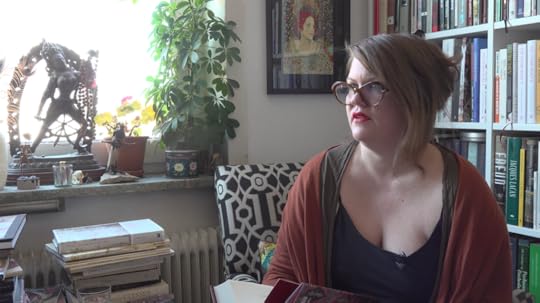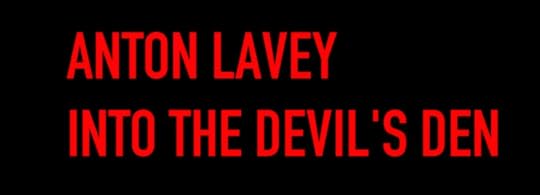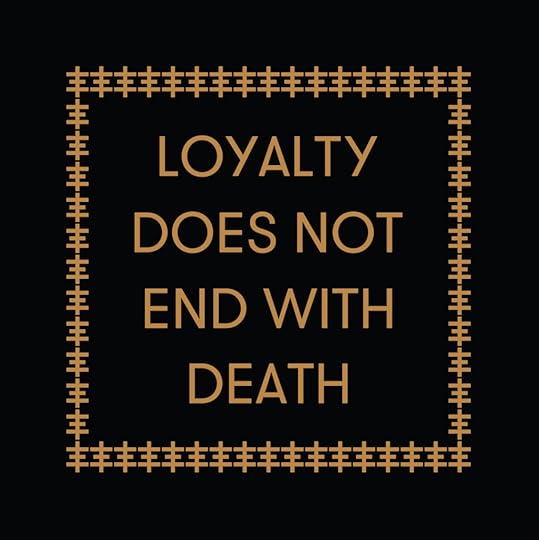Carl Abrahamsson's Blog, page 46
May 4, 2019
Finally… The ”My Silent Lips” soundtrack!
The original soundtrack for my feature film “My Silent Lips” will be released all over the digisphere on May 13th. But for the esteemed hardcore fans, we have made it available on our bandcamp already NOW. Enjoy, and please support by buying the album (it really helps!):
https://highbrowlowlife.bandcamp.com/music
And you can watch the film here:
vimeo.com/ondemand/mysilentlips
May 1, 2019
The gift that keeps on giving…
The crowdfunding campaign for my film ANTON LAVEY – INTO THE DEVIL’S DEN reached its goal, and then some (140%). But to make things even sweeter, IndieGoGo has placed the campaign in its ”Indemand” category, so it’s still possible to back the film for some time even though the deadline has passed. Truly wonderful news! You can check out the campaign right HERE!
April 26, 2019
In conversation about ”Rendering Unconscious”
Psychoanalyst, author, artist, and editor Dr Vanessa Sinclair talks to publisher Carl Abrahamsson about her new book RENDERING UNCONSCIOUS – PSYCHOANALYTIC PERSPECTIVES, POLITICS & POETRY (Trapart Books), her podcast by the same name, and their upcoming conference RE-WRITING THE FUTURE – 100 YEARS OF ESOTERIC MODERNISM & PSYCHOANALYSIS.
Vanessa Sinclair: Rendering Unconscious from Carl Abrahamsson on Vimeo.
For more information, please visit:
www.patreon.com/vanessa23carl
www.trapart.net
www.renderingunconscious.org
www.drvanessasinclair.net
April 25, 2019
On the origins of my upcoming Anton LaVey film
In this short film, I talk about the inspirational origins for my film ANTON LAVEY – INTO THE DEVIL’S DEN.
Carl Abrahamsson on Anton LaVey and his new film from Carl Abrahamsson on Vimeo.
You can back my Anton LaVey documentary at:
https://www.indiegogo.com/projects/anton-lavey-into-the-devil-s-den-documentary
Poems are living things
A film about the making of the album ”Loyalty Does Not End With Death” by Genesis Breyer P-Orridge and Carl Abrahamsson.
POEMS ARE LIVING THINGS from Carl Abrahamsson on Vimeo.
https://www.patreon.com/vanessa23carl
https://vimeo.com/carlabrahamsson/vod_pages
https://boomkat.com/products/loyalty-does-not-end-with-death
https://idealrecordings.tumblr.com/
April 24, 2019
Spilling the beans
Rubbing out the equilibrium of the senses allows for an even greater disruption – one that puts down its feet on the imprint of the very first step. From there, it’s all onwards and upwards for those who dare take the responsibility. One square at a time in the tic tac toe of life.
So many people have failed to see how simple it is. Rewarding themselves on innate ignorance rather than indulging in the warm and fuzzy delights of futuristic nostalgia. If only yesteryear were here – we would see and hear – and shed a tear – over long lost glories.
But these are only figments of someone else’s imagination, and hence not a track record for you to use as a validation in your own process of recreation.
Needless to say, this is where it begins and ends: the proverbial Aleph of the fictional forest. The cones accumulate nicely, one square at a time. And regrowth becomes more than a pastime in the past time; more than a vacation vocation. It becomes a sensual challenge for the intellectual, and one of chemical mentalism for the corporeal dullards. Together, they can strive for the cherished equilibrium of the senses, as well as for a tilting saturation of the intellect.
For what it’s worth, let us always strive further; always taking aim at the horizon while only occasionally looking back at inevitabilities. No remorse for the wicked. No rest for the weary. Huddled in the canvas of the future, we spill our beans until there is nothing more to add.
April 22, 2019
I’m on the ”Gnostic Warrior” Podcast
I was recently in conversation with Moe Bedard on the ”Gnostic Warrior” podcast, talking about Occulture, Cinemagician and the new LaVey film. Check it out right HERE:
April 21, 2019
I’m on the ”The Devil You Know” podcast
Another great podcast talk! I had a nice conversation with the excellent guys from THE DEVIL YOU KNOW. Not surprisingly, we focused on the upcoming LaVey film: background, filming, post production etc. I had a great time talking to these infernal podcasters!
The LaVey film crowdfunder reached its goal!
With ten days left, the crowdfunder campaign for my film ANTON LAVEY – INTO THE DEVIL’S DEN reached its goal. I am utterly overwhelmed by this show of support! Thank you to everyone who has backed it so far. And if you haven’t, there’s still time at:
https://www.indiegogo.com/projects/anton-lavey-into-the-devil-s-den-documentary
Please feel free to spread the link as much as you like!
The show must go on with the show!
Anton LaVey – Into the Devil’s Den (crowdfunder trailer) from Carl Abrahamsson on Vimeo.
April 19, 2019
”Loyalty does not end with death” is released today!
The new album LOYALTY DOES NOT END WITH DEATH is released today via Ideal Recordings.
Here’s the excellent Boomkat Product Review:
”Genesis Breyer P-Orridge, controversial occultist and iconic founding member of COUM Transmissions, Throbbing Gristle and Psychic TV, brings to a close a series of collaborations with Carl Abrahamsson which now spans three decades and which finds P-Orridge narrating over immaculate ambient tapestries, delivered at time-dilating pace.
Electing to use their own names, ’Loyalty Does Not End With Death’ is the final part of a spoken word trilogy initiated in 1990 with the Psychick TV & White Stains side ’At Stockholm’, and proceeded by their ‘Wordship’ [2004] album as Thee Majesty & Cotton Ferox, and is the first appearance the pair have had together on vinyl. It’s the sound of two cosmically-travelled minds crossing paths again after a long absence in which they’ve been able to chew over the bare essentials – love and magick – via vibrant poetry and beautifully charged forms of ambient music.
In nine parts they conjure a warmly meditative space, where Abrahamsson’s characteristic tones, cut-up electronics and gentle rhythms comfortably lay the bed for Genesis, who inhabits and enlivens the pristine scenes like an observant dark interpreter, translating the incomprehensible and revealing the divine through their psychedelic prism.
The spellbinding results were recorded in New York and Stockholm 2017/18 and could feasibly have occurred at any point between 1990 and now. They are blessed with a pacing, intuition and timelessness that pays testament to an enduring creative friendship, taking the form of writing, interviews, photographs and film for nearly 35 years, bringing to resolution an almost life-long arc.”
https://boomkat.com/products/loyalty-does-not-end-with-death
Photo by Vanessa Sinclair














